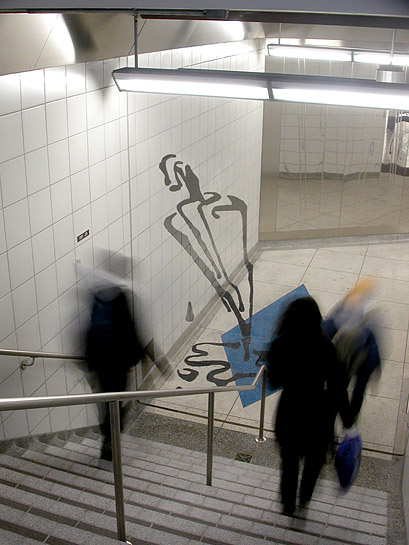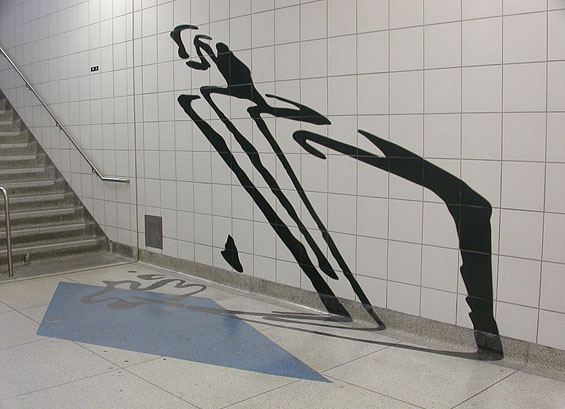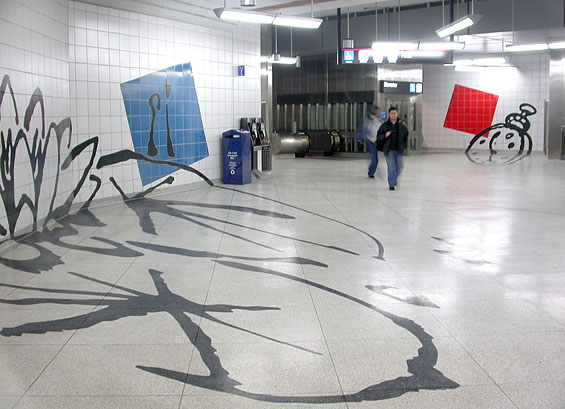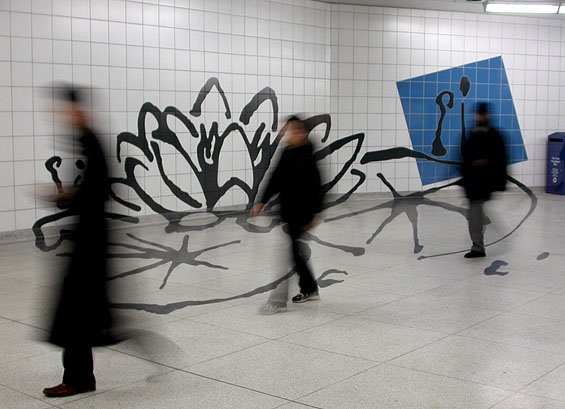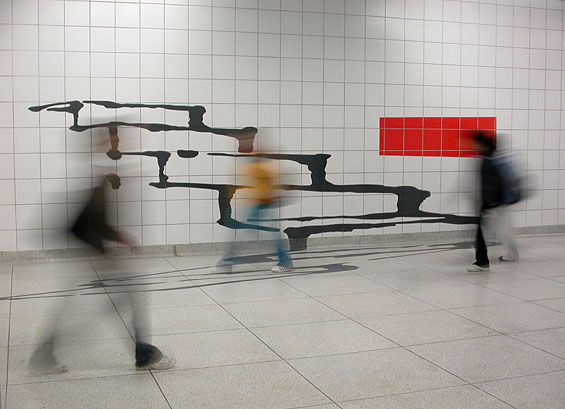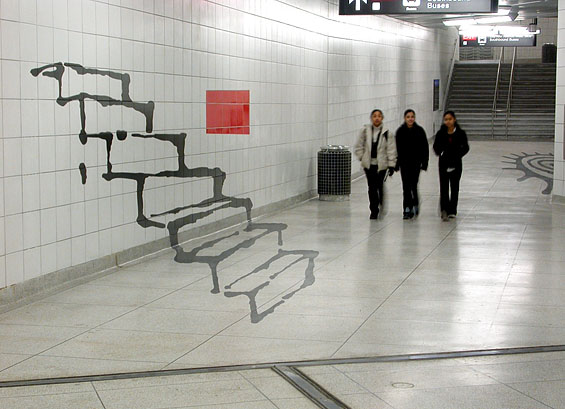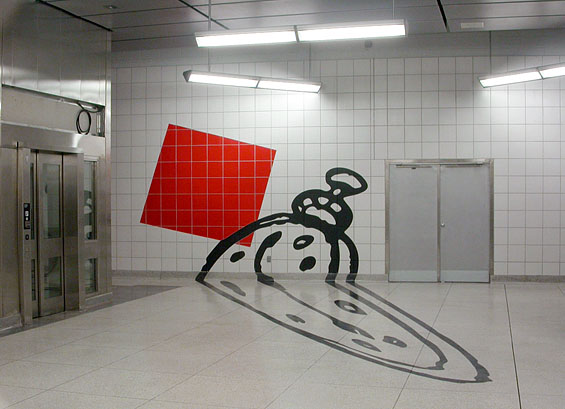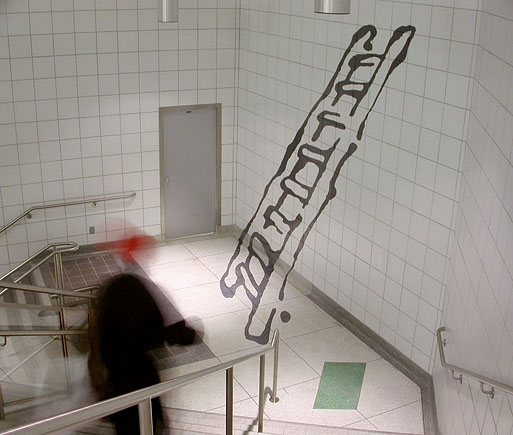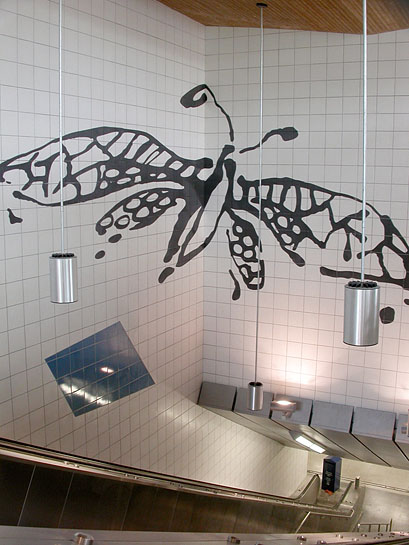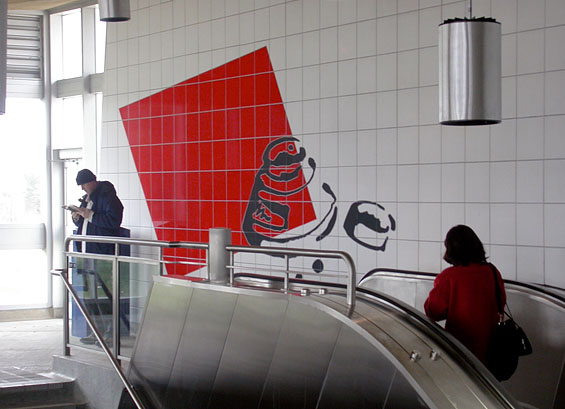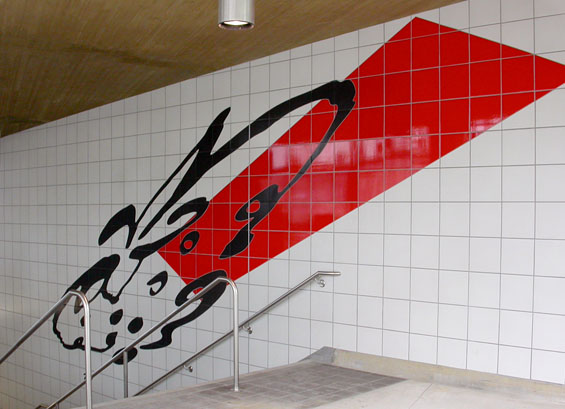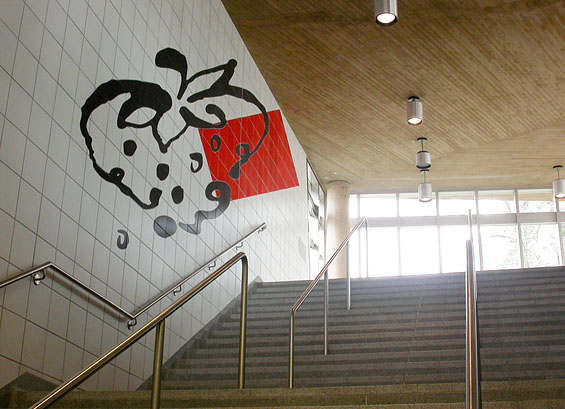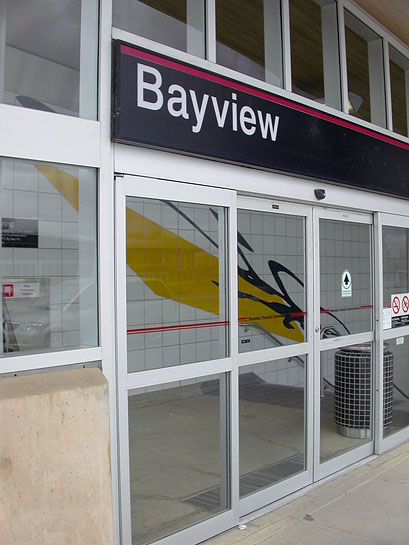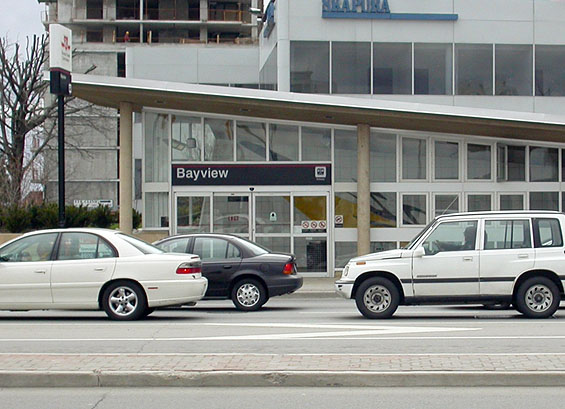From Here Right Now, 2002
Public Art Commission for
the Toronto Transit Commission
waterjet-cut porcelain tile and custom terrazzo at Bayview/Sheppard subway station in Toronto
Twenty-four images depicting everyday objects (such as a ladder, stopwatch and umbrella) and simple geometric shapes were integrated into the station architecture. Each image was initially hand-drawn and then projected against the walls and ceilings of a 3D computer model of the station; the resulting images were then transferred to the walls using waterjet-cut porcelain tile and terrazzo flooring. This created a series of uncommonly large and unusually oriented images that spilled over corners or across the floor. The visual distortion, known as anamorphosis, shifts with the viewer’s movements: the image appears distorted when seen from a frontal position but when viewed from one side or from an angle it resumes normal proportions. The images shift from abstract shapes to ones that appear to hover in space, lending the illusion of sculptural form.
This series of images is intended to accentuate our consciousness about movement and travel through everyday spaces, particularly through these places of transition, while allowing for playful interaction.
